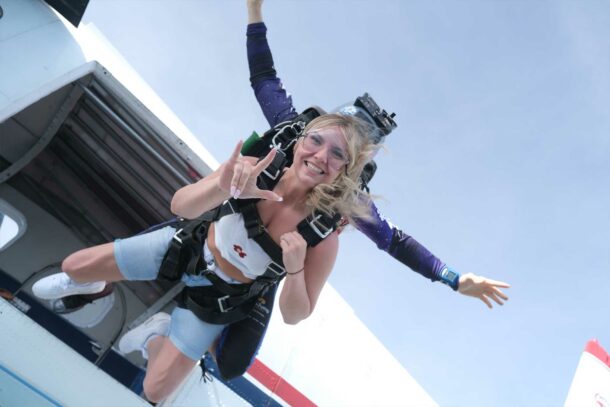Parachute Landings Explained
Monday, May 13, 2019
Let’s Dive into Parachute Landings
Imagine, the colorful parachute blossoming overhead. It’s slowing you down from freefall to a mere 15 mph or so, to float you to the ground. If you were anything like us, we wondered – after that brilliant parachute opening – how it was possible to get to the ground for that inevitable parachute landing.
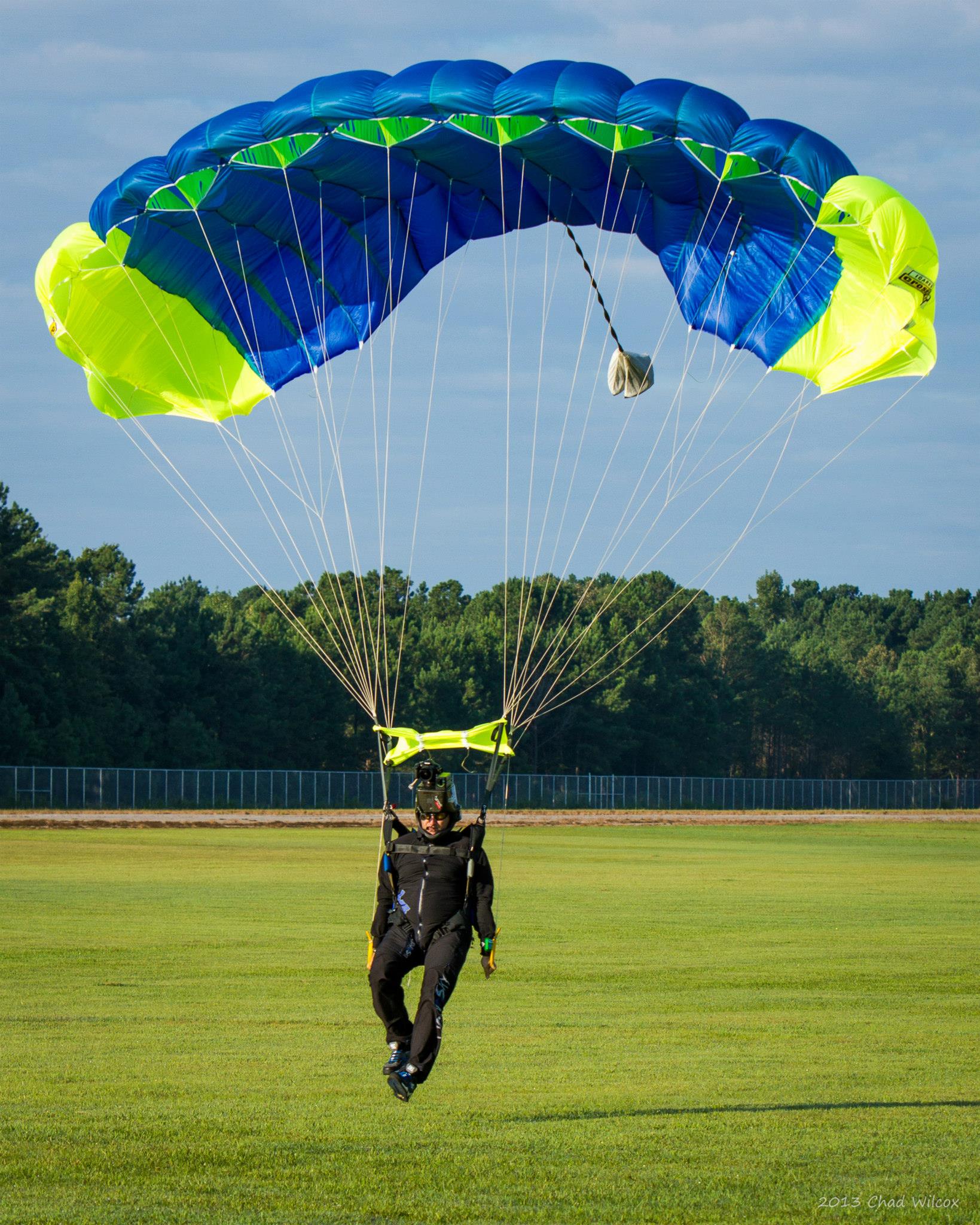
Thankfully, parachute technology and design have come a long way since the early days of round parachutes that didn’t have much steering capabilities and harder parachute landings. Which is why skydivers would use the parachute landing fall technique to land.
Today’s Sport Parachutes
Today’s parachutes are rectangular in shape and have several air pockets called cells, that trap the air inside to keep the parachute inflated, using ram-air principles. Attached to the parachute fabric are lines that extend and attach to the harness. One set of lines are attached to the back of the parachute, all the way down to the jumper, so the skydiver can steer. If you pull a toggle, it tucks the back (or tail) of the parachute, cupping the air and moving it towards that direction. Simply put, if you pull the right toggle, the parachute will turn right and visa versa.
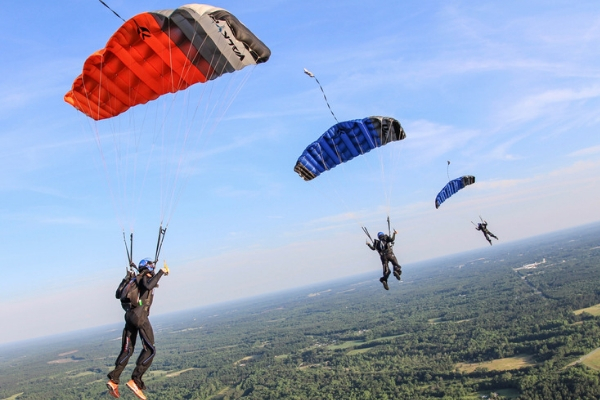
Jumpers usually deploy their parachutes at appropriate heights to their skill levels, and for safety. Highly experienced jumpers deploy around 3,500 feet or above, while students generally deploy around 5,500 feet. Why is that important? Because a jumper needs the altitude to check for a properly working parachute, then prepare for the parachute landing.
Parachute Landing Patterns
Inevitably, every jumper will prepare to enter a parachute landing pattern. The landing pattern is made of three legs similar to how airplanes follow a systematic approach to come into land on a runway and ultimately aim to land into the wind. The legs consist of: downwind, crosswind, and final approach.
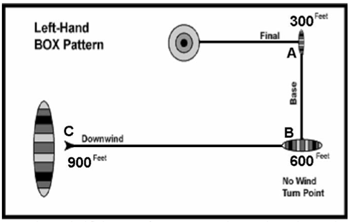
As we said, the parachute has a forward velocity of about 15 mph, when you land into the wind, it slows the jumpers descent for the parachute landing (however, it is ok to land downwind if it’s pre-planned or safer than making a turn too low – when you learn to skydive, your instructor will teach this to you).
Dissecting the Parachute Landing
The last 15 seconds of descent is the most crucial for a parachute landing. All the planning for the last 15 seconds begins before even boarding the airplane – noting the wind direction and speed, knowing the landing pattern direction (some skydiving centers may have all left turns to final approach and others all right turns), and deploying the parachute at the appropriate height to initiate the plan.
Then the last 15 seconds consist of keeping the parachute flying in the same direction making minor corrections if need and preparing to slow down for the parachute landing. To slow the parachute down, the skydiver pulls the two toggles in unison to create even cupping of the back of the parachute. This motion, along with landing in the wind, will slow a jumper down for an ideal parachute landing.
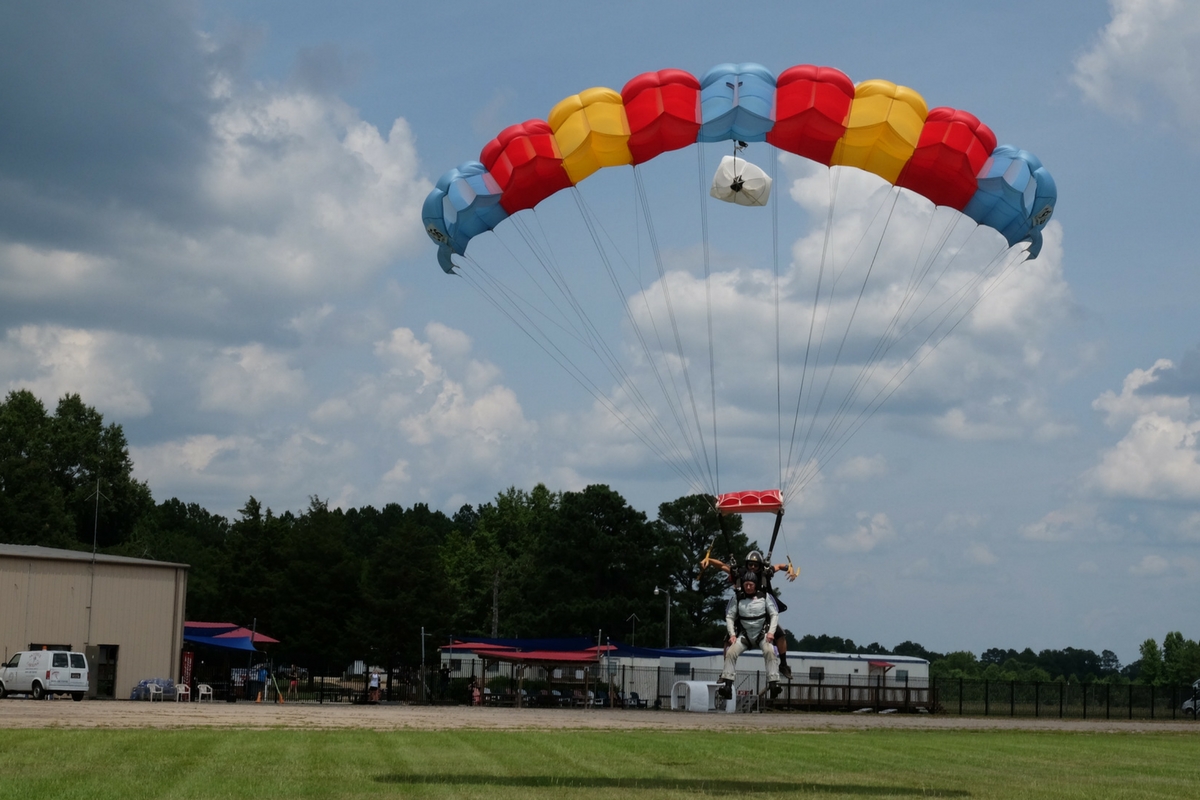
Every parachute landing will be different. How so? If you are a tandem passenger, the instructor will have you tuck your legs and feet up until after the instructor touches down first. This is so you don’t tangle your feet up for landing. However, if you are a solo jumper, you may want to prepare for a parachute landing fall (or PLF). The parachute landing fall is to help absorb any downward energy to distribute over the sides of your shins, to the side of your body as you roll. The parachute landing fall isn’t always needed, but always good to know throughout your skydiving career.
Are you ready to touch down at Skydive Carolina? We’re ready to show you all about the parachute landing and more about this great sport! Click or call us today!
Related Article: What to Expect During Freefall
Copyright © 2024, Skydive Carolina, All Rights Reserved.
DropZone Web Design & Marketing by Beyond Marketing, LLC





